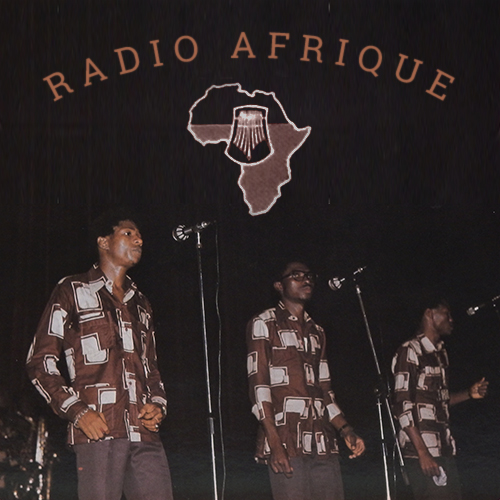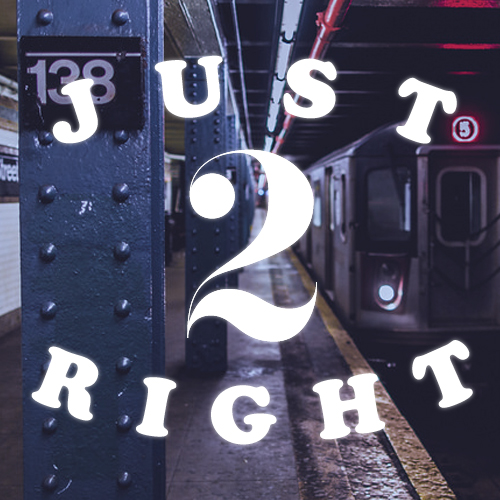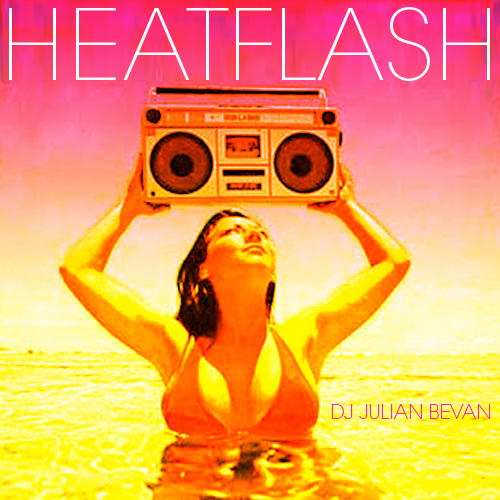RADIO AFRIQUE
roger damawuzan & les as du benin – wait for me
tunji oyelana and the benders – ifa
dan satch & his atomic dance band of aba – woman pin down
monomono – tire loma da nigbehin
peter king – shango
mulugeta haile mikael – kanchi lela
manu dibango – jam session
kiki gyan – disco dancer
fela kuti and the africa 70 – alu jon jonki jon
dioniso maio – corpim sabe
majid bekkas – mrhaba – cervo EDIT
afro national – gowa
afrocult foundation – the quest
el rego et ses commandos – vi man do wingnan
marijatas – break through
le simnadou de bayla – festival
thomas mapfumo & the blacks unlimited – shumba
apatchi band – issmak
jimi tenor – dance of the planets
MIX NOTES
Not sure if it’s the Wakanda Fever that has taken over Brooklyn as of late, but I’ve been listening to a lot of random West African music from the 1970s lately. I will not pretend to be very well versed in these different genres, but I like what I like, and my ears make their own connections between the disparate styles. Hopefully yours will too.
Asaw Fofor – Originally born in Benin, trumpeter & saxophonist Ignace de Souza moved to Ghana in the mid 50s and began inadvertently laying the musical groundwork for not only Ghanian High Life, but Congolese Soukous, and even Nigerian Afrobeat. The first band he joined in Ghana was The Shambros Band, which he then left to join the Melody Aces, who clearly had a love for American jazz and Rock n Roll, as this 1963 tune is basically a West African version of The Twist. The Melody Aces being based in Accra, I can only imagine this song is being sung in Asante Twi (pronounced ‘Chwee’), but I can’t find a translation of even its title anywhere, so I may we be way off the mark.
Wait For Me – Speaking of American influences, this 1972 Afro Funk jam has the bassline of The Temptations’ “Ball of Confusion” (1970) and the horn stabs of James Brown’s “Soul Power” (1971). That makes sense, since Benin’s “king of Gazo”, Roger Damawuzan, was known as “The James Brown of Lomé” for his signature scream and dance moves. His version of “Motherless Child” is also really weird and cool.
Ifa – Some bugged out, 1976 Psychedelia meets Nigeria High Life from Tunji Oyelana and The Benders. I found this many years ago on the incredible Nigeria 70 compilation, which came out around 2000 and was a real Rosetta Stone for me and many other DJs who were starting to dig for Nigerian music beyond Fela. This trend was further aided by a real flood of great compilations of Nigerian music that began pouring out of Europe around this time. Actor, folk singer, musician and performer, Tunji Oyelana was a superstar of the High Life scene and one of the few musicians in the world to make it big singing in Yoruban. As an aside, the split channel vocals remind me of SNL’s Garth and Kat.
Woman Pin Down – There’s not a ton of information out there about Dan Satch and His Atomic 8 Dance Band of Aba. He was a lead trumpeter and arranger, founding the Atomic 8 Band in the early 60s in Aba. This song would likely have been recorded near the tail end of the Biafra secession of 1967-70, an Igbo rebellion also known as The Biafran War or simply The Nigerian Civil War – a bloody conflict between ethnic groups that left over 2 million civilians dead from starvation alone. The vocalist on this is Mohammed Ahidjo, who later sang for The Funkees, an awesome and hugely popular Nigerian High Life band. Check out one of their dope cover of War’s “Slipping Into Darkness“.
Tire Loma Da Nigbehin – Joni Haastrup, the son of a Yoruban King, had already played with Orlando Julius, Fela Kuti, and Ginger Baker before forming his own band, MonoMono, in the early 70s. Though outshines in the history books by Fela, he is considered to have played a pivotal role in the early days of Afrobeat, as the Nigerian sound was taking shape in the mid-late 60s. This is from their groovy second LP, “The Dawn of Awareness”, which was re-issued in 2011 on Soundway, one of the champions of the 70s Afro-Funk revival.
Shango – Sax man Peter King started out playing drums in the Lagos Jazz outfit the Roy Chicago Band the late 50s. He studied music in London, where he formed The African Messengers, who ended playing festivals and touring as the backup group for Motown heavies like the Temptations and The Four Tops. He retuned to Nigeria in 1969 and began creating his own kind of Afr0-Jazz, which has a lot of High Life and Afrobeat elements. His band even played at the front during the civil war, to rally the troops. Tragically, this would have been on the opposite side of the frontlines, mind you, as Dan Satch, mentioned above. I put another favorite P.K. song of mine, “Ajo”, on THIS MIX.
Kanchi Lela – Heading two thousand miles to the East, we find similar funkiness being laid down in Ethiopia by Mulugeta Haile Mikael. I can only find evidence of having released a single 7” in 1974, but Ethiopian music can be particularly hard to research online, so I may be wrong. In case you’re wondering, I highly doubt he was related to Haile Selassie. Haile is a very common Amharic name that simply means ‘power.’
Jam Session – Another banger from Cameroonian superstar Manu Dibango‘s 1975 soundtrack to Countdown At Kusini, a black liberation saga directed by Ossie Davis and released in the states as “Cool Red”. I got hipped to this record by Francois Kevorkian a few years ago, and its been in rotation ever since. If you’re feeling it, there’s another song from this same LP on THIS MIX.
Disco Dancer – Determined to not limit myself to just Afro-Funk, I had to include this bumping’ tune from Ghanian keyboard king, Kofi Kwarko ‘Kiki’ Gyan. Kiki dropped out of school at 14 to tour London with a local Ghanian band. He promptly quit the band and started playing keys for the UK Afro-Funk band Osibisa at age 15. He toured the world all through the 70s, hanging out with the hippest of the hip, including Marvin Gaye, Peter Tosh and Elton John. He went solo in 1979 and had some legit disco hits (like this track) for a short time, before fading into obscurity and a drug problem that eventually led to poverty and an untimely death. Let’s turn this up and dance, in Kiki’s honor, shall we?
Alu Jon Jonki Jon – I tried to resist putting Fela on this mix, because DJs like to be all obscure n shit, but there’s just SO MANY great Fela songs, and have but so few mixtapes to give. This is from his 1972 “Afrodisiac” LP, which has only 4 songs, and every one of them is absolutely BANGIN’. You could say that this LP was the when the trouble began, when he began putting political messages aimed at the govt in his music (the B-side “Je’Nwi Temi (Don’t Gag Me)”. This song, however, is a retelling of a Yoruban folktale – about a tortoise that hides his mother in heaven during a time of famine when the animals are all eating each other. The groove is classic Fela, with the band breaking it way down to an Afrobeat vamp, while he gets into a long, call-and-response thing with the band that is a direct parallel of what James Brown was doing in a different corner of the globe. Man would I have loved to be a busboy at Fela’s club, The Shrine, the night Bootsy and the JB’s hung out there during their 1970 Nigeria tour.
Corpim Sabe – I recently found this song in a random folder that I must have made at some point, simply titled “African”. It had no name, and no artist, but it did have the cover of the record embedded. Sometimes I dig around on blogs and just start downloading anything that looks interesting. I have no memory of when or where I grabbed this, but there it was. And it was GOOD! My best guess was that it was from the early 80s, and likely from Cape Verde, since the song has that unmistakable swing you hear in the Coladeira sounds of Cesária Évora – which are certainly cousins of some West Indian and Brazilian carnival music. Dionisio Maio recorded only two records, in 83 and 84. A few other songs have turned up on Analog Afrika compilations, but that’s about it. Analog Africa, BTW, is another incredible source for lots of great African music that has fallen into obscurity.
Mrhaba – cervo EDIT – Heading up north along the west coast you eventually reach Morocco, home of the Gnawa music I really fell in love with when I was in Morocco. Gnawa music is centered around a a three -string lute made from a goat’s hide, and these big-ass metal castanets, called krakens. It’s all the rage with the cool, weed-inclined kids in Morocco, and has its routes in Sub-Saharan West Africa. This is a house-ish remix of a Majid Bekkas – a Gnawa superstar that we were lucky enough to see perform at the Sacred Music Festival in Fes.
Gowa – Heading back south along the coast, we reach Sierra Leone, home in the 1970s to the Afro-National band, who were mixing local Gumbe rhythms with Ghanian High Life and putting out smoking tracks like this one. This is the third track on their 1978 Tropical Funkmusic LP, and it certainly lives up to its name.
The Quest – Not to be confused with the UK house music outfit, Afro CELT Soundsystem, the Afrocult Foundation were a Afro-Jazz group who released a soundtrack for Ola Balogun’s film “Black Goddess”, shot in Brazil and Nigeria in 1978. It features 4 Nigerian heavy hitters of the day – Remi Kabaka, Dele Okwonko, Bd Wright, & the aforementioned Joni Haastrup. You can see some footage from it HERE. There’s a much longer sax break that I edited down for time.
Vi Man Do Wingnan – The Godfather of Benin Funk, Theophile Do “El” Rego, is a certifiable legend in his home country. His music is sung in the Fon language, from which the word Voodoo originates – usually called Vodun, by peeps in Benin, Togo, Nigeria, and Haiti.
Break Through – Getting back over the border into Ghana, we have Marijata, who clearly knew how to lay down some heavy, dance floor funk. They were originally a part of a larger band called The Sweet Beans, that was fully sponsored by the CMB, The Ghana Cocoa Marketing Board. the name Marijata was chosen because of their pan Africanist leanings, which favored celebrating African Empires of antiquity, especially Mali and their 13th Century Prince, Sundiata Keita.
Festival – The cover image of this mix is a shot of this band, Le Simnadou de Bayla, aka The Beyla Federal Orchestra, who championed Guinean Mandinka music in the 60s, 70s and 80s. Bands like these would represent Guinea at International Festivals all over the world. They were led by Hamidou Diaouné for decades before virtuoso guitarist Sekou Diabate took over.
Shumba – A really mezemerizingly beautiful track from Thomas Mapfumo and the Blacks Unlimited‘s second LP, “Gwindingwi Rine Shumba”, released in 1981. Fiercely political, the guitarist has long been a national hero, known popularly as “The Lion of Zimbabwe”, for his relentless criticism of the Mugabe regime. He records in his native Shona language, and basically invented this style of music, called Chimrenga. He has been living in exile in the Eugene, Oregon since the late 90s.
Issmak – I discovered this very Santana-sounding track by somebody called The Apatchi Band on UK DJ Bill Brewster’s impressively-robust compilation “Tribal Rights”. It’s packed full of good music I’ve never heard before. This gem was from a Library LP on the UK label Cavendish, and also released as a 45 on their President imprint.
Dance of the Planets – I’m finishing up this mix with a relatively new song from Helsinki multi-instrumentalist Jimi Tenor, who channeled Sun Ra all over this 2012 track. It makes me smile. I hope it makes you smile too.
<hr/ >




